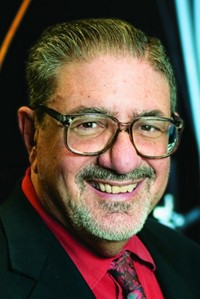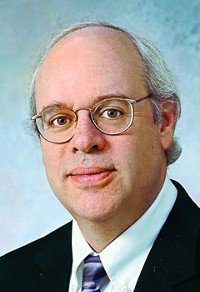Advertisement
Grab your lab coat. Let's get started
Welcome!
Welcome!
Create an account below to get 6 C&EN articles per month, receive newsletters and more - all free.
It seems this is your first time logging in online. Please enter the following information to continue.
As an ACS member you automatically get access to this site. All we need is few more details to create your reading experience.
Not you? Sign in with a different account.
Not you? Sign in with a different account.
ERROR 1
ERROR 1
ERROR 2
ERROR 2
ERROR 2
ERROR 2
ERROR 2
Password and Confirm password must match.
If you have an ACS member number, please enter it here so we can link this account to your membership. (optional)
ERROR 2
ACS values your privacy. By submitting your information, you are gaining access to C&EN and subscribing to our weekly newsletter. We use the information you provide to make your reading experience better, and we will never sell your data to third party members.
Analytical Chemistry
E. Bright Wilson Award In Spectroscopy
by Mitch Jacoby
March 3, 2014
| A version of this story appeared in
Volume 92, Issue 9
Sponsored by the ACS Division of Physical Chemistry
For nearly 40 years, Richard P. van Duyne has been pushing the limits of Raman spectroscopy. The Charles E. & Emma H. Morrison Professor of Chemistry at Northwestern University demonstrated in the 1970s that roughened silver surfaces can strongly enhance Raman scattering of molecules adsorbed on them.
That work set the foundation for the now well-established surface-enhanced Raman spectroscopy (SERS) method for analyzing molecules. Because that technique can enhance Raman signals by a factor of more than 100 million relative to solution-phase measurements, it has become a powerful and well-known analytical method. Not surprisingly, van Duyne’s 1977 paper describing his group’s discovery of SERS has been cited more than 2,000 times.
Years later, van Duyne remains a productive and imaginative analytical chemist who continues to advance spectroscopy. About a decade ago, for example, van Duyne and coworkers developed ways to exploit surface plasmon resonance spectroscopy as a sensitive probe for biological molecules. More recently, van Duyne’s team developed a procedure for integrating SERS and femtosecond stimulated Raman spectroscopy. The tandem method combines an exceptionally sensitive tool for identifying molecules with a method for measuring Raman spectra on the timescale of molecular motion.
The Northwestern researcher has also demonstrated recently that tip-enhanced Raman spectroscopy (TERS), a method for obtaining vibrational and chemical information on the nanometer length scale, can be applied to interrogate individual molecules. And his group has also demonstrated a method for combining TERS with the high-resolution imaging capabilities of scanning tunneling microscopy. The combined procedure allows researchers to probe with exceptional spatial resolution the interactions between large surface-adsorbed polyatomic molecules and their surface binding sites.
Van Duyne’s accomplishments are broadly recognized by other scientists. For example, the University of Oregon’s Geraldine Richmond, a leading spectroscopist and surface scientist, describes van Duyne as “a truly outstanding spectroscopist whose research has led to new techniques with unprecedented sensitivity at the ultimate time and length scales.” Not only that, Richmond says, but he’s an educator with an extraordinary record of mentoring students and postdoctoral fellows and has served the spectroscopy community extensively.
Van Duyne, 68, completed an undergraduate degree in chemistry in 1967 at Rensselaer Polytechnic Institute and earned a Ph.D. degree in chemistry from the University of North Carolina, Chapel Hill, in 1971. In that year, he began his academic career at Northwestern, where he has mentored nearly 115 graduate students and postdoctoral researchers.
Van Duyne has published more than 300 articles in scholarly books and journals and has served on the advisory boards of several publications including the Journal of Physical Chemistry, Accounts of Chemical Research, and the Annual Review of Physical Chemistry.
As well as being the recipient of numerous awards and honors, van Duyne was elected to the National Academy of Sciences and the American Academy of Arts & Sciences. He also won the American Chemical Society Award in Analytical Chemistry. Van Duyne was honored by the Royal Society of Chemistry with the Sir George Stokes Award, was honored by the American Physical Society with the Earle K. Plyler Prize for Molecular Spectroscopy & Dynamics, and won the L’Oréal Art & Science of Color Prize.
Van Duyne will present the award address before the Division of Physical Chemistry.





Join the conversation
Contact the reporter
Submit a Letter to the Editor for publication
Engage with us on Twitter